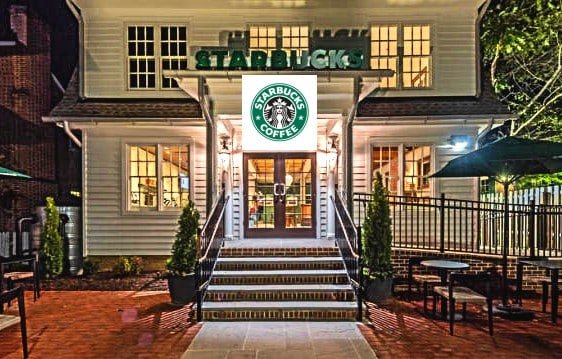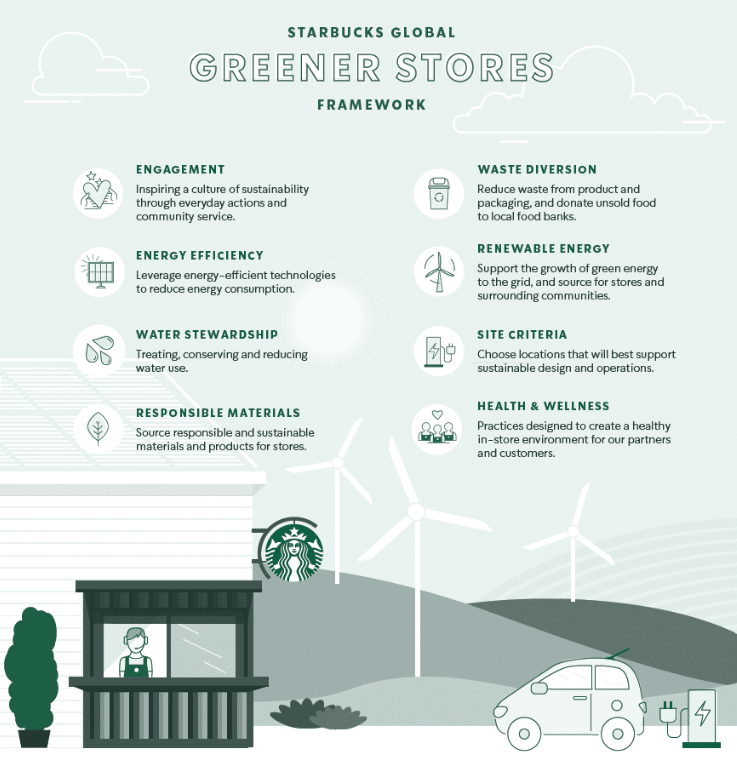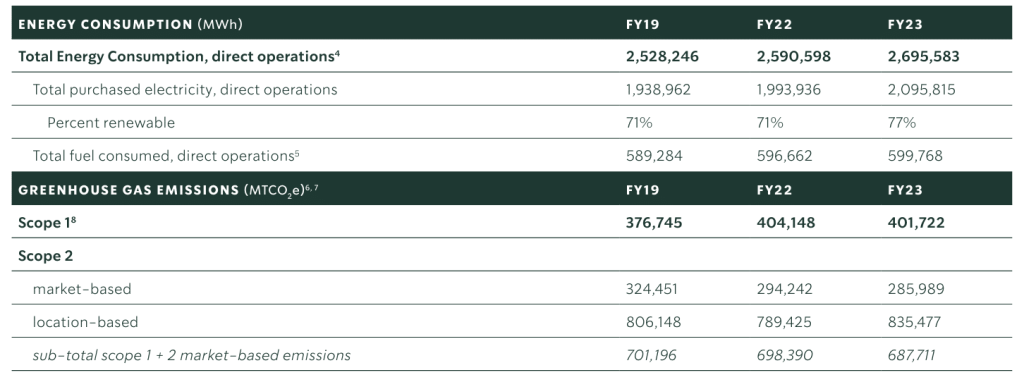Starbucks faced a challenging second quarter with declines across major financial metrics, including traffic, revenue, and income, resulting in its stock price plunging. Despite this, the company remains committed to sustainability, aiming to reduce its climate impact by 50% by 2030 through its ambitious “Greener Stores” initiative.
Starbucks Financials Are Boiling Down
Starbucks holds a premium status in the hearts and habits of many, yet its recent quarter revealed a harsh reality: even major consumer companies face tough times. Indeed, Starbucks’ latest results were undeniably dismal.
Starbucks’ challenging second quarter, which concluded on March 31, delivered disappointing results across the board. Key metrics such as traffic, revenue, and income experienced declines:
- 4% decrease in comparable-store sales
- 2% decline in consolidated net revenue
- 2.4% drop in operating margin
- 14% decline in earnings per share
Investors have recently taken a pessimistic view, with Starbucks’ stock dropping about 7% following the report of a quarterly decline in comparable-store sales on April 30. The stock subsequently reached a 52-week low shortly after the company announced its fiscal second-quarter results.

This marked Starbucks’ first revenue downturn since the onset of the pandemic, a stark departure from the company’s long-term target of high-single-digit growth. Yet, as a brand with a 50-year history, Starbucks remains steadfast in its commitment to champion sustainability in the industry.
The coffee chain set an ambitious goal of reducing its climate impact by 50% by 2030. This bold target includes both the direct and indirect carbon footprint of Starbucks. And a big part of this goal is the restaurant’s “Greener Stores” initiative.
The Greener Stores Program
Starbucks designated nearly 16% of its 38,587 cafes as Greener Stores, meeting strict criteria for waste, energy, and water conservation. This marks nearly twofold increase from April 2023, with the aim of certifying 10,000 stores worldwide by the end of 2025. The majority, totaling 5,488 locations, are situated in North America, out of Starbucks’ global network of 38,600 cafes.
Across Latin America and the Caribbean, all new Starbucks stores adhere to Greener Stores standards. Meanwhile, the company’s real estate team is evaluating which markets should follow suit.
To achieve Greener Store status, locations must undergo an independent audit by SCS Global Services, confirming investments and practices across eight environmental impact areas, including:
The Starbucks location in Williamsburg, Virginia, is among the six sites recently recognized as Greener Stores of the Year. Originally a 100-year-old home, this building was repurposed into a cafe featuring:
- Renewable energy sourced from the local grid.
- An on-site rainwater collection system for landscape irrigation.
- Banquettes crafted from recycled wood.
In the United States, the implementation of Greener Stores practices has slashed energy and water use by 30%. This yielded nearly $60 million in annual operational savings. As part of Starbucks’ broader corporate pledge, the company aims to halve emissions, water consumption, and landfill waste by 2030.
Starbucks GHG Emissions Reduction Goal
The coffee chain giant aims to achieve 50% absolute reduction in scope 1, 2 and 3 greenhouse (GHG) emissions involving all of Starbucks direct operations and value chain. The food company uses 2019 GHG emissions as a baseline and reported an 18% increase in emissions in 2023.
To address this environmental impact, the coffee giant has been busy expanding its Greener Stores program. Slashing waste and energy through this initiative means reducing Starbucks carbon footprint, too.
According to Michael Kobori, Starbucks’ chief sustainability officer, the long-term goal is for all new stores to be constructed according to Greener Stores guidelines, with existing locations retrofitted as updates become necessary. The standards used in Greener Stores program were developed in partnership with World Wildlife Fund (WWF) and SCS Global Services.
Taking inspiration from the LEED certification program, Starbucks introduced the Greener Stores framework in September 2018. This initiative builds upon Starbucks’ previous investment in the Leadership in Energy and Environmental Design (LEED) certification by the U.S. Green Building Council, which acknowledges environmentally conscious construction practices and design.
Notably, Starbucks played a role in establishing the LEED for Retail designation. But unlike the LEED program, the Greener framework places a strong emphasis on operational metrics.
The Growing Trend of Green Standards in the Restaurant Industry
The adoption of standard frameworks like Greener Stores is becoming increasingly common within the restaurant industry. This is particularly among chains facing scrutiny from shareholders regarding their carbon emissions and sustainability efforts, noted Alastair MacGregor, national business line executive and green buildings analyst at consulting firm WSP.
Many establishments prioritize passive architectural design strategies aimed at reducing energy consumption. These strategies include maximizing natural lighting in seating areas and selecting appropriately sized food preparation and ventilation equipment for each location.
Last year, the world’s largest McDonald’s franchisee had also revealed a new standard for sustainability in restaurants to reduce its growing carbon emissions. The food chain partnered with UBQ Materials which employs advanced technology that can avoid GHG emissions of >14 kg/CO2 equivalent.
However, smaller retail organizations often struggle to justify the initial costs of implementing technologies that haven’t yet gained widespread acceptance.
Starbucks offers its Global Academy course free of charge to suppliers interested in staying informed about the company’s procurement requirements. It is also free to other retailers aiming to reduce the environmental impact of their real estate.
Starbucks is navigating through financial turbulence while steadfastly committing to slash its carbon footprint for a greener future. The Greener Stores initiative shows how the company is leveraging sustainability to drive long-term growth and operational efficiency.




